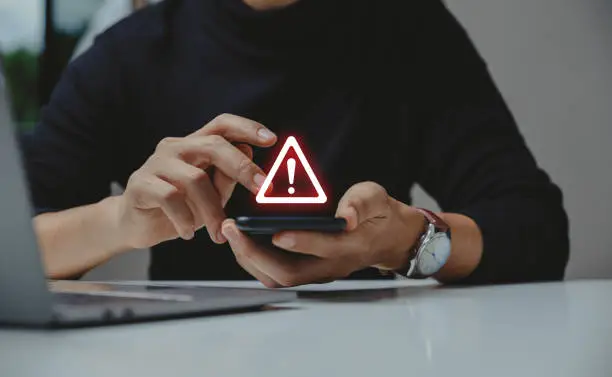Social media has become an indispensable tool for individuals and businesses alike. Platforms like Facebook, Twitter, Instagram, and LinkedIn allow us to connect, share ideas, and build brand awareness. However, as these platforms grow in popularity and use, they also become targets for cybercriminals who exploit social media vulnerabilities to launch attacks.
A social media threat is any potential harm that can come from the misuse or exploitation of social media networks. From identity theft and impersonation to phishing attacks and data breaches, social media threats can harm individuals, damage businesses, and compromise sensitive information. This article explores what social media threats are, identifies the most common types, and provides actionable strategies to prevent them. By taking a proactive approach to social media security, you can protect your personal and business presence online, minimizing risks and safeguarding data.
What Is a Social Media Threat?
A social media threat refers to any malicious activity that can occur on or through social media platforms. These threats may involve unauthorized access to accounts, the spread of harmful information, identity theft, phishing scams, malware distribution, and other security breaches. Social media threats exploit user trust and often rely on manipulation to gain access to sensitive information.

For businesses, social media threats pose additional risks. These threats can disrupt daily operations, tarnish a brand’s reputation, and expose sensitive data, including customer information. Because social media is highly public and accessible, attackers often find it easier to target users through these platforms.
Many social media threats rely on “social engineering,” which is the practice of manipulating individuals into revealing confidential information or performing actions that benefit the attacker. For instance, an attacker might impersonate a friend or co-worker to gain trust and then ask for sensitive information. Being vigilant and aware of the potential risks is key to minimizing exposure.
Most Common Threats on Social Media
Social media threats come in various forms, each posing unique risks. Here are some of the most common threats you might encounter:
Phishing Attacks
Phishing scams are one of the most prevalent social media threats. Attackers use fake profiles, messages, or posts to trick users into revealing sensitive information like passwords, account numbers, or personal details. These messages often look like they come from friends, family, or trusted companies, making it easy for unsuspecting users to fall for them. Phishing attacks can lead to compromised accounts, identity theft, and even financial loss.
Malware and Ransomware

Malicious links and files are commonly shared on social media, and clicking on them can install malware or ransomware onto a user’s device. Malware can allow attackers to spy on your activity, steal your data, or lock you out of your device until you pay a ransom. Some malware can even spread from one account to another, putting all of your followers at risk. These attacks are often disguised as innocent-looking advertisements, messages, or videos, making them hard to spot without caution.
Impersonation and Fake Accounts
Impersonation occurs when malicious actors create fake profiles that look nearly identical to legitimate ones. These fake accounts are then used to deceive followers, scam customers, or spread misinformation. For businesses, fake profiles can harm customer trust and damage brand reputation. Impersonators might also reach out to followers asking for sensitive information or payments, causing financial loss to your customers or employees.
Identity Theft
Social media platforms often contain a wealth of information about users, including birthdays, hometowns, family details, and more. Cybercriminals can collect this information over time, using it to steal identities or commit financial fraud. The more personal information you share, the easier it becomes for attackers to piece together a profile that allows them to impersonate you or gain unauthorized access to your accounts.
Cyberbullying and Harassment

Unfortunately, social media is a common ground for cyberbullying and harassment. These attacks may involve personal insults, threats, or the spread of false information. For businesses, cyberbullying can lead to brand damage, while for individuals, it can cause emotional distress and even legal consequences.
Social Engineering Attacks
Social engineering is a manipulation technique that attackers use to trick people into giving up confidential information or performing actions that benefit the attacker. This can include impersonating someone in an organization or posing as a trusted contact to gain sensitive information. Social engineering attacks are highly successful on social media, as attackers can easily gather information to make their approaches more convincing.
How Do You Prevent Social Media Threats?
Preventing social media threats involves a combination of awareness, proactive measures, and continuous monitoring. Here’s how to secure your social media accounts and reduce risks:
1. Enable Strong Passwords and Two-Factor Authentication (2FA)
Use strong, unique passwords for each of your social media accounts. A password manager can help you create and remember complex passwords. Enabling two-factor authentication (2FA) is an additional layer of security that requires a secondary verification step, making it more difficult for attackers to gain unauthorized access.
2. Limit Sharing of Personal Information
Avoid posting sensitive personal details, such as your full date of birth, home address, or phone number. This type of information can be pieced together by cybercriminals to conduct identity theft or social engineering attacks. Be mindful of what you share, and review your profile privacy settings to limit visibility to only trusted contacts.
3. Be Cautious of Suspicious Messages and Links

Do not click on unfamiliar links, download files from untrusted sources, or respond to suspicious messages, even if they seem to come from a friend or colleague. Phishing attacks often masquerade as legitimate requests, so verify the sender’s identity by contacting them through other methods if you’re unsure.
4. Regularly Monitor Account Activity
Keep an eye on your social media accounts for unusual activity, such as logins from unknown devices, unauthorized posts, or messages you didn’t send. Many social media platforms allow you to set up alerts for unusual activity, so be sure to enable these if available.
5. Train Employees on Social Media Security
For businesses, educating employees about social media threats is essential. Hold training sessions to help employees recognize phishing messages, malicious links, and other potential threats. Establish a clear social media policy that outlines what’s acceptable to share on personal and business accounts, and ensure employees understand the potential risks.
6. Use Privacy Settings and Control Permissions

Each social media platform offers privacy settings to control who can view your information and posts. Regularly review and adjust these settings to limit access to only those you trust. Avoid granting permissions to third-party applications that request unnecessary access to your accounts.
7. Report Suspicious Accounts and Activity
Social media platforms have built-in tools for reporting fake profiles, spam, and suspicious activity. Reporting these accounts helps keep the platform safer for everyone. If you encounter anything that seems off, don’t hesitate to report it.
Conclusion
In an era where social media is integral to communication and brand-building, understanding and preventing social media threats is crucial. By taking a few precautionary steps, such as using strong passwords, enabling two-factor authentication, and regularly monitoring account activity, you can mitigate many risks associated with social media threats. These security practices not only protect your accounts but also help build trust with your audience.
Marketing Techology offers SEO services and content marketing solutions to help businesses navigate the digital landscape safely and effectively. Our team is dedicated to helping you grow your brand online while minimizing risks. Partner with us to strengthen your digital presence and reach your business goals without compromising security.
Frequently Asked Questions
How can businesses protect against social media threats?
Businesses can protect against social media threats by implementing security training for employees, using strong passwords, and enabling two-factor authentication on all accounts. Monitoring accounts for unusual activity and setting up alerts can also help detect threats early. Establishing a clear social media policy that outlines security protocols and appropriate online behavior is essential for maintaining security and protecting brand reputation.
What should I do if I suspect a social media threat?
If you suspect a social media threat, avoid engaging with the suspicious message, link, or profile. Report the activity to the platform and notify your contacts if you believe they may be affected. Change your passwords immediately, enable two-factor authentication if it’s not already active, and check recent account activity for any unauthorized actions.
What should I do if my account has been compromised?
If your account has been compromised, take immediate action to secure it:
- Change your password.
- Enable two-factor authentication for added protection.
- Review recent activity and delete any posts or messages you did not create.
- Inform your contacts of the compromise, so they don’t fall victim to potential scams or phishing attempts.
- Contact the platform’s support team for further assistance and to secure your account fully.






Hi, this is a comment.
To get started with moderating, editing, and deleting comments, please visit the Comments screen in the dashboard.
Commenter avatars come from Gravatar.